MIG SAGA 3rd part the Jets Propelers MIG 17
Version francaise
See Tome 1 2 4 5 6 7
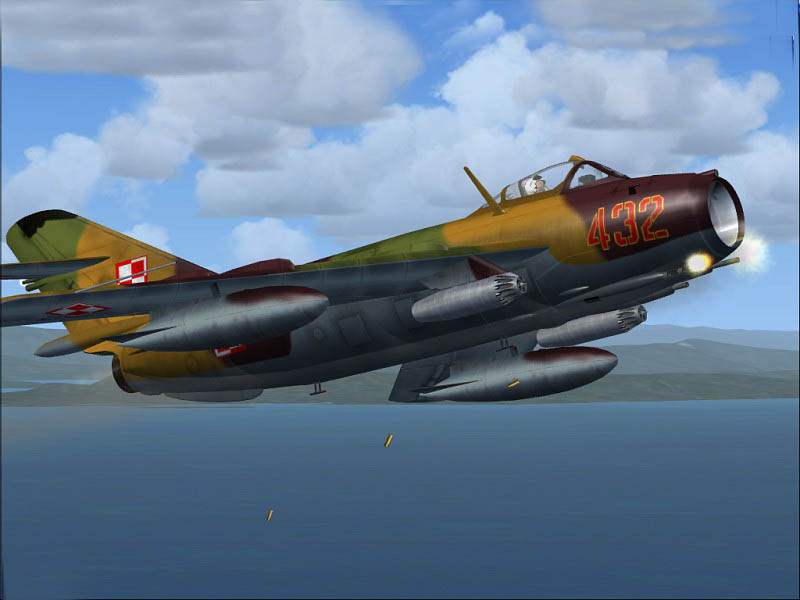 |
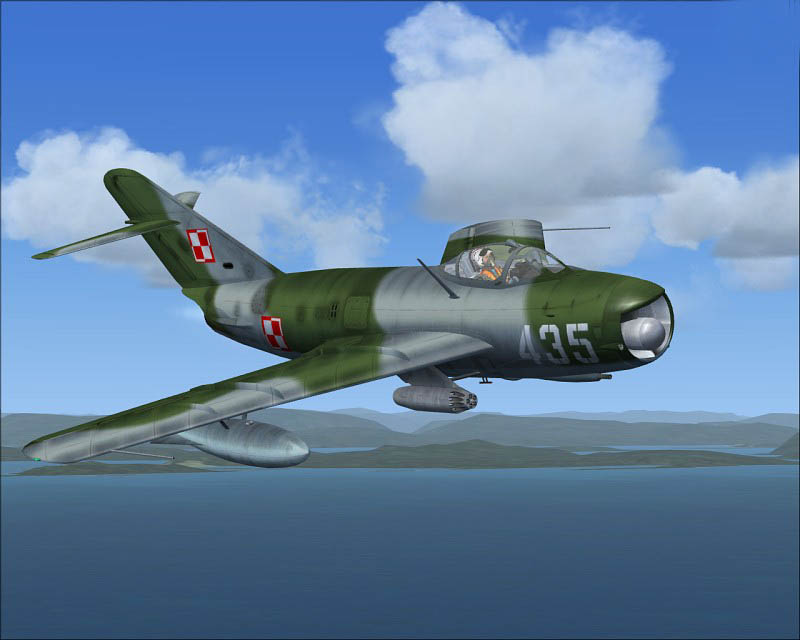 |
| MiG 17 F Fresco |
MiG 17 PF Fresco |
MiG 17
History
In 1949, on the basis of MiG-15bis, the MiG OKB was ordered to design a derivative of the MiG-15 with improved performance, with the derivative aircraft to be built in both tactical fighter and all-weather interceptor versions . But Soviet power need this aircraft very quickly
So MiG OKB use the little MiG 15 to make another aircraft faster and better with the I-330 (SI)
The new design was variously designated the "MiG-15bis 45" or "I-330" or, most prominently, " Istrebitel SI", and two prototypes were built. The silhouette is the same except a new wing with a 45°sweep instead of the original 35°sweep This was done through research, experiments, and the consideration that the MiG-15 with a wing of 35 ° has already become outdated.
The new device as also a slightly elongated rear fuselage and a more severe form of the top vertical fin.
Initial flight of the first prototype took place on January 14th 1950 and at once the similarity with MiG-15bis was clear with the same cockpit layout, landing gear arrangement, armament, and avionics. The rear fuselage was stretched 90 centimeters and though the tailfin had the same configuration as that of the MiG-15bis, it was larger. The increase in length and bigger tailfin were not very noticeable, but a distinctive ventral fin with a ground bumper at the rear was fitted that provided a distinctive recognition feature. The new wing was of "scimitar" configuration, with a sweep of 49 degrees on the inboard half and 45.5 degrees on the outboard half.
The new wing also had rounded wingtips and three fences on each wing instead of two, to prevent airflow "defections" over the wingtip. Airplane SI-2 was released in late 1949, and Instanly the first prototype demonstrated incrementally improved performance relative to the MiG-15bis, though it had slightly less range. It also handled better and was more agile than the MiG-15bis, but its controls were a bit heavier. On February 1st , 1950,test pilot IT Ivashchenko on factory tests at the first instance of it the first time in combat aircraft reached an altitude of 5000 meters at the speed of 1161 km / h. Previously there have been speed up to Mach 0.92.
But in March, he died in the crash of the aircraft, which delayed testing. Despite the tragedy of the lost of the first protype with his pilot the second prototype was ready and trials continued without a lapse Two preproduction aircraft, fitted out to the tactical fighter configuration, were built and flown in 1951,The second and third instances (SI-02 and SI-03) were tested (20 June 1951) were successful and received the designation MiG-17 It was ordered into production before trials were complete in 1951 to replace the MiG-15 with the first production machines rolled out in 1952 The MiG-17 soon entered formal VVS service, and was given the NATO codename of "Fresco".
After the serial production started in August 1951. MiG 17 during his production, was improved and modified several times. The basic MiG-17 was a general-purpose day fighter, armed with three cannons. It could also act as a Figther Bomber , but its Bomload was considered light relative to other aircraft of the time, and it usually carried additional fuel tanks instead of bombs.The2nd prototype SP-2", was an interceptor equipped with radar
Once later variants were introduced, the NATO codename for the initial variant retroactively became "Fresco-A". This original version of the fighter with the VK-1A engine designed for operation in field conditions are not too bad weather , as well as a fighter-bomber, to escort bombers and to support the troops on the battlefield
Description
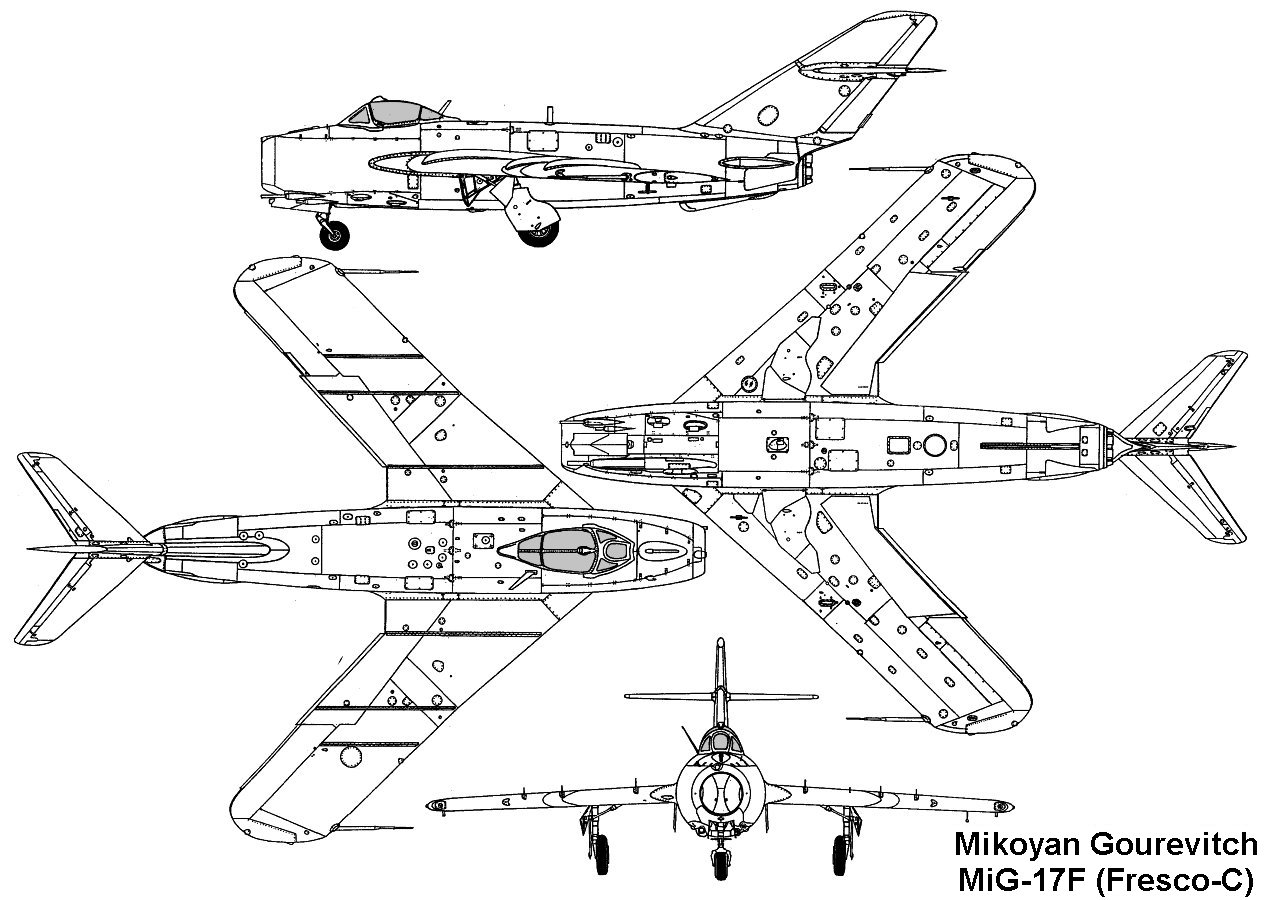 |
| |
On the outward forms and structures MiG-17 had many similarities with the MiG-15. The differences were mainly the following. Wing sweep on the leading edge was 45 ° in the root of (up to polurazmaha) and 42 ° in the terminal portion, the wing area increased to 22.6 sq.m. Cross V is -3 °, on each console, three aerodynamic ridge height of 100 mm. Airfoil little thinner, coupling the wing and fuselage improved due to land at the rear edge of the boards. Fuselage lengthened, respectively, greater sweep. The tail feathers slightly increased, especially vertical sweep of its 56 °, horizontal 45 °. Under the terminal part of the fuselage of a small false keel for better directional stability, partly protecting the fuselage with a possible landing at a large angle.
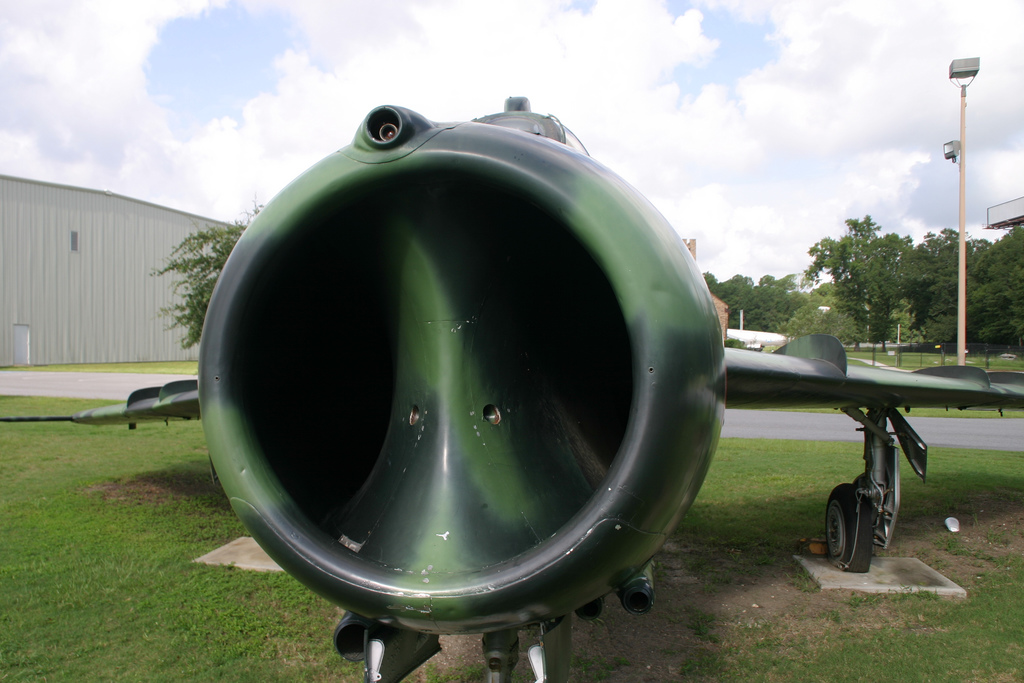 |
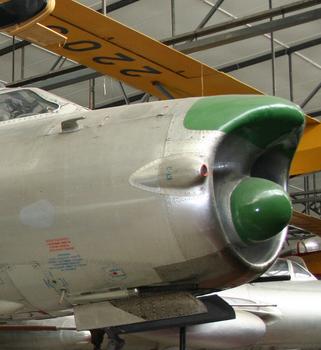 |
| Noze MiG 17 F Fresco internet |
Noze MiG 17PF Fresco internet |
Airbrake deflected at 55 °, sliding flaps, thrust at 20 ° during takeoff and 60 ° during landing.
Ailerons with internal wind compensation, on the left trimmer.
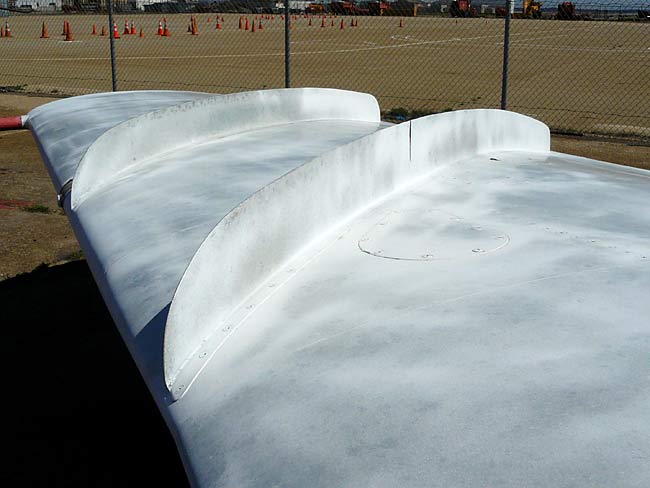 |
| Wing fencing Internet |
Extension wing 4,08, 1,23 narrowing. Fuselage length 9206 mm, diameter 1,45 m, the area of vertical tail 4,26 m, 3,10 m horizontal, rudder 0.947 sq. m, 0,884 sq ft elevator, ailerons 1,6 m , flaps 2,86 m, 0,88 m brake flaps
All-metal construction, close to the MiG-15. In the latest series introduced irreversible boosters in the management of elevators. Control of the plane tough. Ejector seat of a new type of protected persons pilot shutter, which included the dropping of the mechanism of ejection.
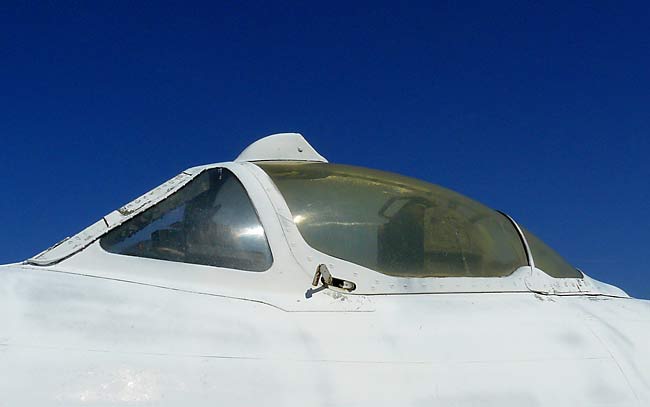 |
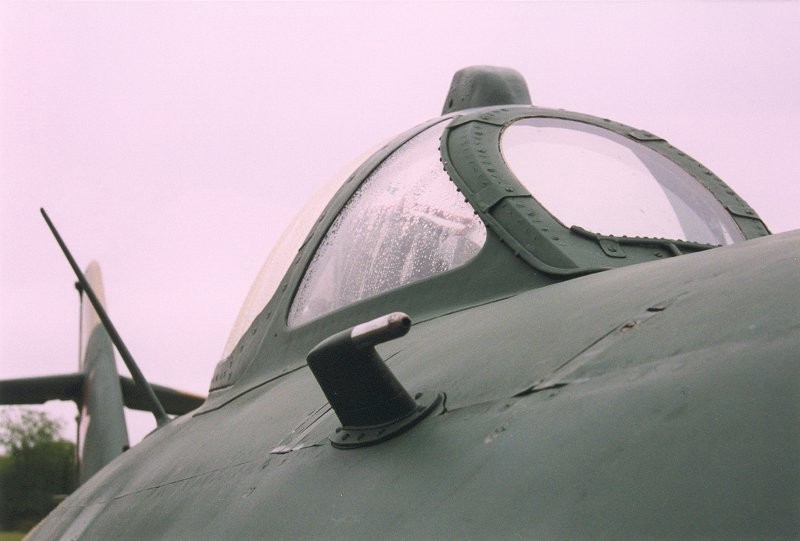 |
| Canopy internet |
Canopy internet |
The chassis in general, as in MiG-15. Wheels 600 and 160 * 480 * 200 mm for all linkage suspension. Track 3,85 m. The Rise and landing gear, flaps and control of hydraulic brake flaps, emergency landing gear, wheel brakes and recharging weapons from the pneumatic system.
Sealed cabin ventilation type, partially armored bottom; frontal bulletproof glass, hot air heating lamp, lamp sealing lid with a rubber hose.
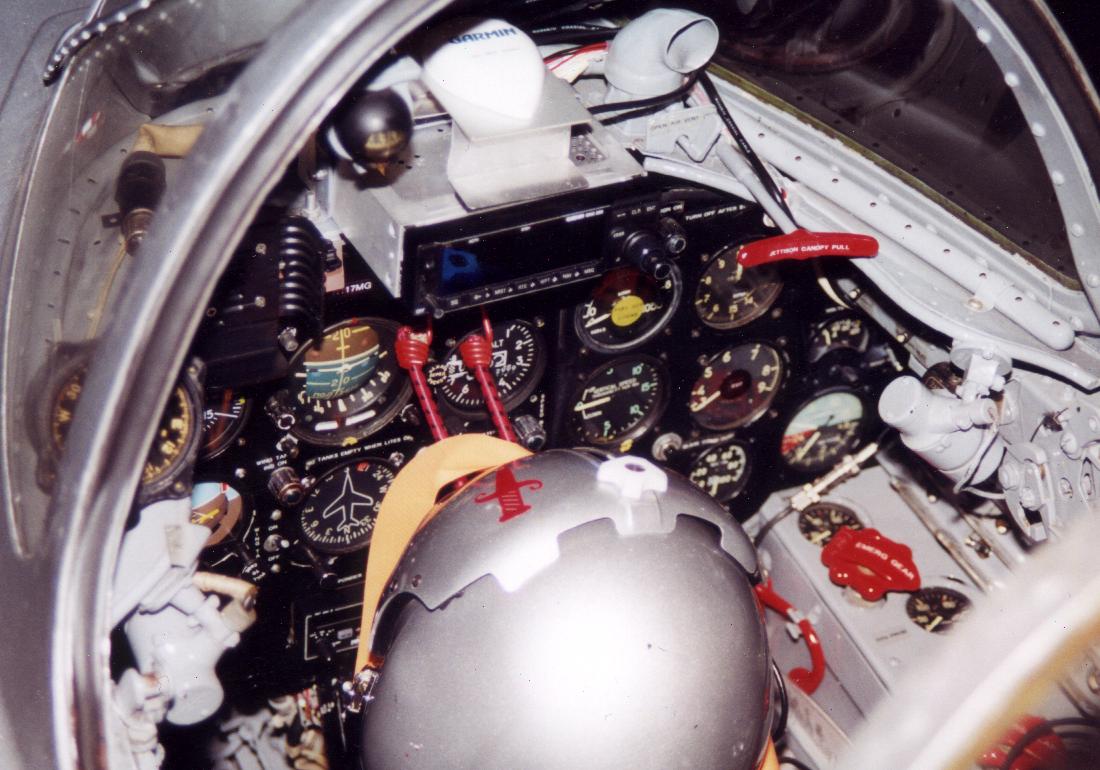 |
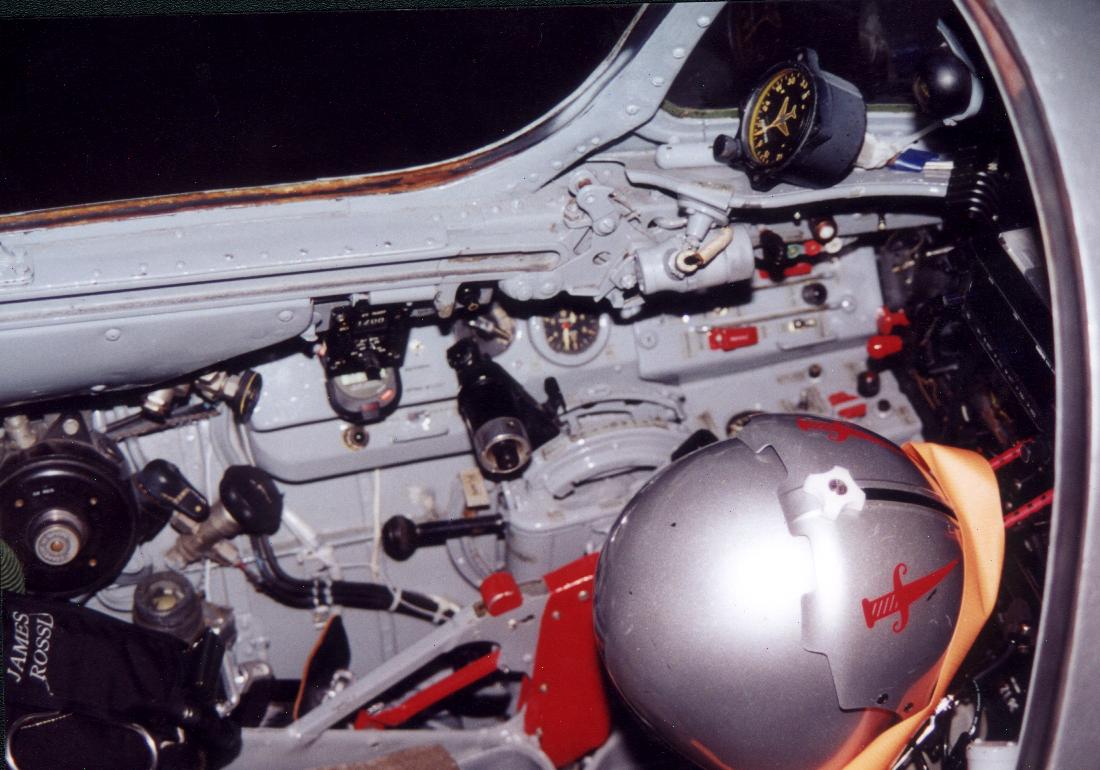 |
| Cockpit Interior Internet |
Cockpit Interior Internet |
Suspended two tanks of 400 liters of short rods, not adjacent to the wing. Length of 3,0 m with a well-streamlined shape, weight of 32 kg (as on the MiG-15bis and MiG-15UTI).
Armament (at the bottom of the fuselage nose), one gun H-37 (40 rounds) and two NR-23 cannons (80 rounds), and sometimes all three HP-23, under the wing of the holders of two bombs on 50, 100 and 250 kg.
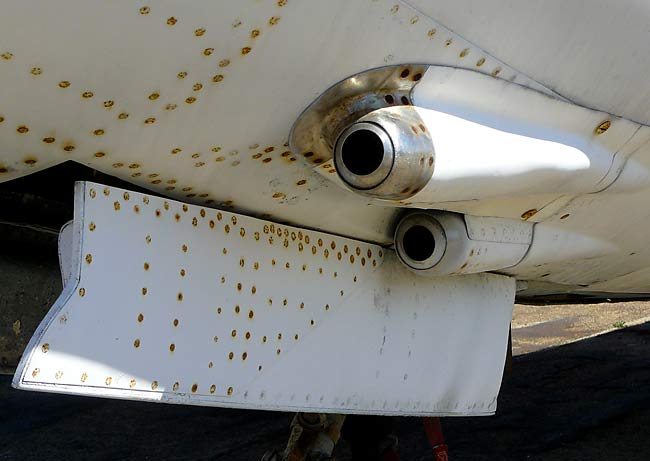 |
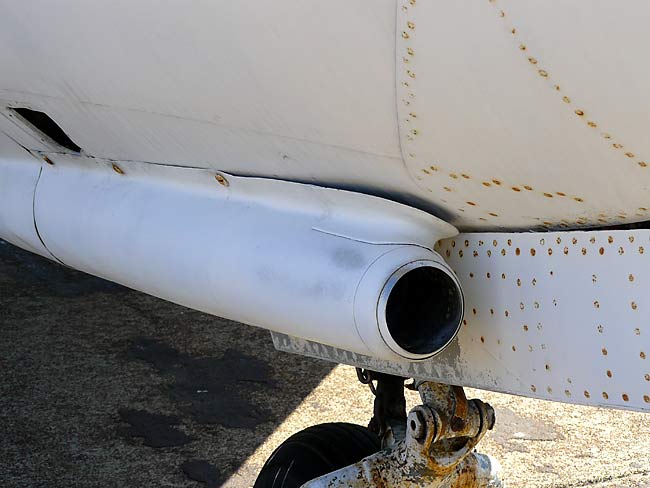 |
| Gun port Internet |
Gun port Internet |
Two fuel tanks: the main behind the cab, in front of the engine, rubber to 1250 liters and an additional metal to 160 liters at the beginning of the rear fuselage.
All MiG-17 were equipped than the normal set of devices in the camera wearing the top of the fuselage, fotokinopulemetom for the analysis of fire and the periscope at the top of the lantern for review earlier. In addition to the wiegth of the frame we found
Pilot parachute 100 kg
Bombs HP 23 68 kg,
Bombs H-37 55 kg,
Kerosene (T-1) 1173 kg, 1,402 kg total.
External fuel 664 kg.
He has a maximum speed of 1114 km / h at an altitude of 2000 meters
Engine is the same VC-1, but the rate increased by 40-50 km / h, improved maneuverability on large (but not small), altitude, rate of climb increased, the weight at the same engine. The act stated that, despite some deterioration takeoff data, the plane can take off from the same airfield as the MiG-15.
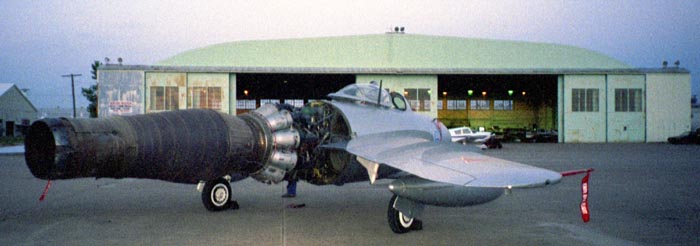 |
| |
Duration of the flight with drop tanks reached 2 h 53 min, and the range of 1735 km. In the design make improvements, such as irreversible boosters in the management of elevators, improved brakes and wheels, etc.
Empty weight increased to 3900 kg and above, though without noticeable loss in flying qualities.
Takeoff weight is gradually increased to 5340 kg and 6072 kg of fuel tanks instead of the original 5050-5480 kg.
Armament
(MiG-17, MiG-17F are day-fighter variants armed with two 23 mm NR 23 cannons (80 rpg) and one 37 mm N 37 cannon (40 rounds) mounted on a common bed under the central air intake.
The gun bed was an easy for maintenance.
On MiG-17P, MiG-17PF with radar-equipped the 37 mm N-37 was replaced with a third 23 mm NR-23 (carrying 100 rpg) to compensate for the weight aft of the radar.
The MiG-17P was equipped with the Izumrud-1 (RP-1) radar, while the MiG-17PF was initially fitted with the RP-1 which was later replaced with the Izumrud-5 (RP-5) radar. The MiG-17PM was also equipped with a radar, used to aim its missiles. Other variants have no radar
.jpg) |
| |
.
All variants could carry 100 kg bombs on two underwing pylons and some could carry 250 kg bombs
But however, these pylons were usually used for 400 l fuel tanks.
The MiG-17R was armed with two 23 mm cannons.
Most MiG-17s in third world service today fly as ground attack or trainer aircraft.
MiG-17PM or MiG-17PFU was the only variant with air-to-air missiles was the which could carry four K 5 (NATO: AA-1 "Alkali") and it had no cannons.
Some countries occasionally modified their MiG-17s to carry unguided rockets or bombs on additional pylons. MiG-17s in Cuba could be armed with AA-2 "Atoll" missiles.
Versions (Wikipedia)
I-300 Prototype
MiG-17 (Fresco-A) Basic fighter version powered by VK-1 engine ("aircraft SI").
MiG-17A Fighter version powered by VK-1A engine with longer lifespan.
the MiG-17 "Fresco-A" received continuous upgrades in service, such as modernized avionics and an improved VK-1A engine, with the same thrust as the VK-1 but greater reliability. Machines with the VK-1A engine were sometimes referred to with the designation of "MiG-17A". A new ejection seat was introduced into production in 1953, providing a face screen, leg restraints, and stabilizers to keep the seat from tumbling. A rear-view mirror was also added, fitted on top of the canopy. Work had been done on such an item for the MiG-15, but it proved trickier than it sounds, suffering problems such as icing up at high altitude, and no production MiG-15 ever had such an item. Further enlarged airbrakes were introduced as well.
More work on the VK-1 had led to its ultimate production development, the afterburning "VK-1F", providing an afterburning thrust of 33.16 kN (3,380 kgp). A prototype of a MiG-17 with the VK-1F -- this aircraft being an odd hybrid of a MiG-15bis forward fuselage; wings and tail taken from an early MiG-17 prototype; and a new rear fuselage with the VK-1F engine -- was first flown on 29 September 1951, with test pilot A.N. Chernoborov at the controls
MiG-17AS Multirole conversion, fitted to carry unguided rockets and the K-13 air to air missile.
After its first-line service life, MiG-17Fs were used in the close-support role, being fitted with an extra pylon inboard on each wing to carry an unguided rocket pod. Such conversions were given the designation of "MiG-17AS". As with MiG-15bis fighter-bomber conversions, they were really only an interim solution.
MiG-17P (Fresco-B) All-weather fighter version equipped with Izumrud radar ("aircraft SP")
As mentioned, the development plan for the MiG-17 included design of a radar-equipped all-weather interceptor variant. A single "SP-2" prototype was flown in 1951 with the single-antenna "Korshoon (Kite Hawk)" radar, which was an improved version of the Toriy radar tested in the MiG-15bis.
MiG-17F (Fresco-C) Basic fighter version powered by VK-1F engine with afterburner ("aircraft SF").
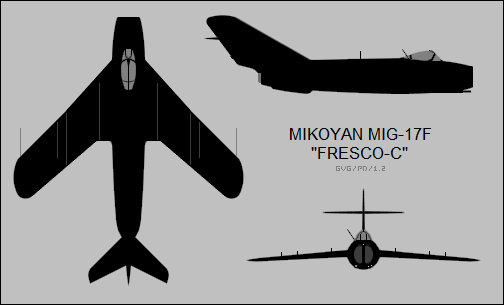 |
The afterburning MiG-17 was very similar to the "Fresco-A", the only major external differences being a variable exhaust that was not hidden in the fuselage, and (once again) modified airbrakes. While horizontal speed showed little improvement in afterburner, climb rate and top ceiling were greatly improved. The type was ordered into production as the "MiG-17F" in 1952 and entered operational service in 1953. It was assigned the NATO codename of "Fresco-C" -- the "Fresco-B" is discussed below
Improvements were added to the MiG-17F during the course of production, such as an SRD-1 radar gunsight -- identifiable by a small strakelike antenna on top of the nose -- plus changes in engine and fuel systems. Late in the type's service life, some would be fitted with the "R-3S / K-13A" heat-seeking AAM, which had the NATO codename of "AA-2 Atoll" and was a copy of an early-model US Sidewinder AAM.
MiG-17PF (Fresco-D) All-weather fighter version equipped with Izumrud radar and VK-1F engine ("aircraft SP-7F")
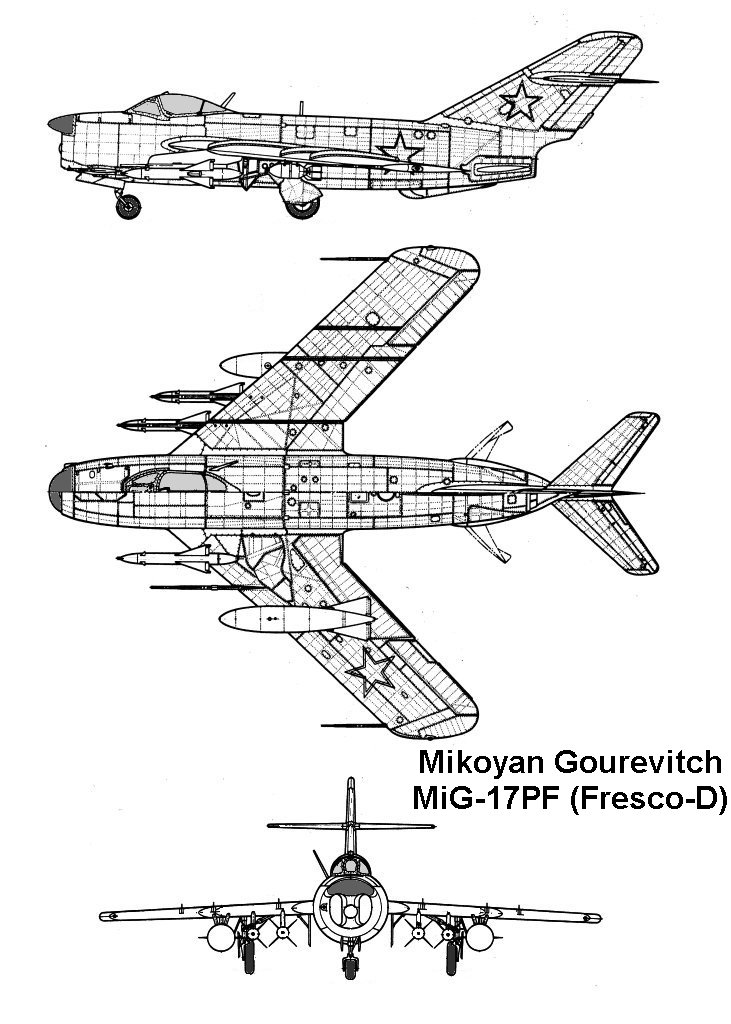 |
| |
.
The radar arrangement was much the same as it had been for the MiG-15bis, though instead of retaining the 37 millimeter cannon and dumping the 23 millimeter cannon, the MiG-17 testbed retained the 23 millimeter cannon and dumped the 37 millimeter cannon. The results of this entire exercise were much the same as they had been for the Toriy-equipped MiG-15bis: the Korshoon radar was too complicated to operate and it didn't work worth a damn. This particular aircraft was retained for further trials use. However, as mentioned, trials of the Izumrud RP-1 radar with the MiG-15bis had gone well, and five prototypes of a MiG-17 interceptor with the RP-1 radar were built and flown in 1952. The installation was much like that for the MiG-15bis, with the search radar antenna in a "fat lip" installation at the top of the intake, and the tracking radar antenna in a radome on the intake splitter. The cockpit and canopy were modified to accommodate the radar scope, and the 37 millimeter cannon was replaced with an NR-23 cannon, giving a total armament of three 23 millimeter cannon, with 100 rounds per gun.
Trials also going well, the interceptor variant was ordered into production as the "MiG-17P". Once in service it was given the NATO codename of "Fresco-B", although the MiG-17F "Fresco-C" had actually preceded it into production. Incidentally, the RP-1 radar was given the NATO codename of "Scan Odd", following the inclination to assign quirky names to Soviet radars. In service, a MiG-17P was guided to a target under strict ground control, with the pilot performing the terminal attack using the RP-1 system; it didn't have the range or sophistication to allow the pilot to hunt a target on his own. Apparently the reliability of the Izumrud radar in service was poor, though that was usually true everywhere for complicated aircraft systems such as radar in that period.
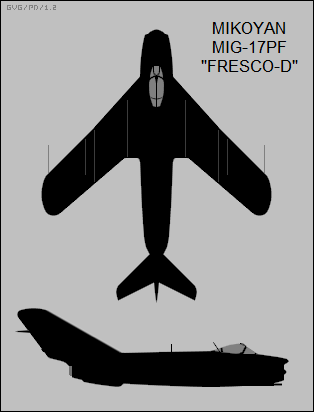 |
Production machines featured variation in armament fit, with some aircraft having only two 23 millimeter cannon, while some others had the standard MiG-17 "Fresco-A" armament of one 37 millimeter and two 23 millimeter cannon. The MiG-17P was the first Soviet radar-equipped single-seat fighter to go into full service. It was flown by the Soviet national air-defense organization, the Protivo-Vozdushnoy Oborony (PVO) -- a separate service from the VVS -- and, oddly, the Red Navy air arm. It doesn't appear to have been used by the VVS in any numbers, if at all.
Incidentally, a MiG-17 "Fresco-A" was fitted with the ASP-4N Sneg (Snow) radar gunsight, which was a copy of the US AN/APG-30 used on the F-86 Sabre. A sample was obtained from an F-86A that crash-landed behind Red lines in Korea in 1951. This machine looked like a MiG-17 with a Sabre nose. There was a push to actually produce a Soviet F-86, but it didn't really make sense. Aircraft design was moving quickly in that era, and by the time a Red Sabre entered service it would have been not only obsolescent compared to Western fighters, but to improved Soviet fighters as well. The USSR had succeeded in catching up with Western aircraft designs. * The plan had been to produce the MiG-17P with the VK-1F afterburning engine. However, there were difficulties in building the VK-1F in adequate quantity, so at the outset production deliveries were allocated to the MiG-17F fighter, while the MiG-17P was produced with the non-afterburning VK-1/1A engine.
The production issues were worked out, leading to the construction of a prototype of a MiG-17P with a VK-1F afterburning engine, this machine performing its first flight on 8 August 1952 with Georghiy A. Sedov at the controls. The prototype demonstrated improved climb rate and top speed, though since it was heavier and the VK-1F had slightly lower dry thrust than the VK-1/1A, range and cruise speed suffered slightly. On the whole, however, the modifications were regarded as satisfactory, and the variant went into production in 1953 as the "MiG-17PF". It was given the NATO codename of "Fresco-D".
The MiG-17PF also featured the modified airbrakes of the MiG-17F, as well as cockpit changes and a Sirena-2 RWR. Late production MiG-17PFs had the improved RP-5 Izumrud 2 radar, with greater range and a larger radome on the centerline intake bulkhead. In the mid-1950s, some MiG-17PFs were fitted with a Gorizont-1 (Horizon-1) radio command link for directing ground-controlled intercepts. These machines were given the new designation of "MiG-17PFG".
In the mid-1950s, as new aircraft with radar-guided AAMs were introduced, there was a desire to keep the older MiG-17s useful by equipping some of them with the new armament. The result was the "MiG-17PFU", which was a MiG-17PF "Fresco-D" armed with four K-5M / RS-2 (NATO AA-1 Alkali) radar beam-riding AAMs on underwing pylons, and fitted with the appropriate guidance and fire-control electronics. The cannon were removed.
With the VK-1F radar and in appearance almost indistinguishable from the MiG-17P, but despite further growth in the weight (up to 5620-6552 kg), kept the flying qualities of the original MiG-17, just turn time increased to 85-62 s (with afterburner), speed 1115 km / h at an altitude of 3000 m, and the rate of climb at sea level 55 m / sec.
MiG-17PM/PFU (Fresco-E)
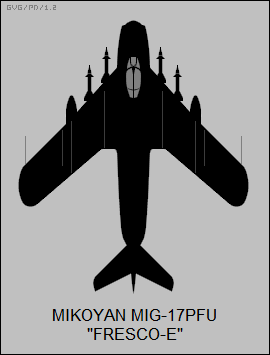 |
Fighter version equipped with radar and K-5 (NATO: AA-1 'Alkali') air-to-air missiles ("aircraft SP-9").
There were about 40 conversions from "Fresco-Ds", with the type given the NATO codename of "Fresco-E". The AA-1 Alkali AAM was very primitive, with limited range, poor performance, and apparently low reliability. It amounted to little more than a stepping-stone to better AAMs. The "Fresco-E" was used mostly for training pilots to fly more advanced interceptors.
MiG-17R
Reconnaissance aircraft with VK-1F engine and camera ("aircraft SR-2s")
A tactical reconnaissance variant of the MiG-17F was built in small numbers, with the designation of "MiG-17R". The 37 millimeter cannon was deleted, though the two 23 millimeter cannon were retained
MiG-17SN
Experimental variant with twin side intakes, no central intake, and nose redesigned to allow 23 mm cannons to pivot to engage ground targets. Not produced.
The SN was tested in 1953 and ran into a problem: When the cannon were fired upward, the nose pitched down, and when they were fired downward, the nose pitched up. Accuracy of the weapons was poor. This shouldn't have been a surprise in hindsight, but apparently the good results obtained with the trials on the MiG-15, where the two cannon weren't mounted so far from the center of gravity, bred a degree of complacency. The greater weight of the SN also degraded performance, and the intake arrangement led to engine surge. Although some of the test pilots liked the concept and thought it deserved further development, their views didn't carry the day, and the SN was abandoned.
Another particularly interesting modification laid the groundwork for the next generation of MiG fighters. By the early 1950s, Soviet jet engine design had progressed beyond the era of leveraging off of foreign technology. The engine design bureau under Alexander Mikulin had developed new axial-flow engines with improved power-to-weight ratios and greater fuel economy, and the Mikoyan OKB was considering their application to new fighters with higher performance.
izdeliye SM-1" or "I-340
As an experiment, a MiG-17 "Fresco-A" prototype was fitted with twin "AM-5" axial-flow turbojets, mounted side-by-side in a new "fat" rear fuselage; it was otherwise hard to tell from a stock MiG-17. The compact engines permitted a greater internal fuel capacity. The machine was also fitted with a brake parachute. The aircraft was mainly intended as an engine demonstrator and was designated "izdeliye SM-1" or "I-340", with first flight in the spring of 1952. The AM-5 was a non-afterburning engine, providing 19.6 kN (2,000 kgp / 4,400 lbf) thrust, with the two AM-5s providing greater thrust than a VK-1F in afterburner. The AM-5 engines were later swapped with lighter and more powerful, but still non-afterburning, "AM-5A" engines, providing 21.1 kN (2,150 kgp / 4,740 lbf) thrust each. An afterburning "AM-5F" engine was developed, but it was never fitted to the I-340.The I-340 had better range and performance than a standard MiG-17F; it was capable of breaking Mach 1 in level flight. The engines were unreliable -- with engine failures abruptly cutting off cabin pressurization and causing the pilot's nose to start pouring out blood -- but the engines represented a new generation of technology and some difficulties were to be expected. The I-340 didn't go into production, but the concept wasn't discarded by any means, as discussed later.
Izdeliye SN"
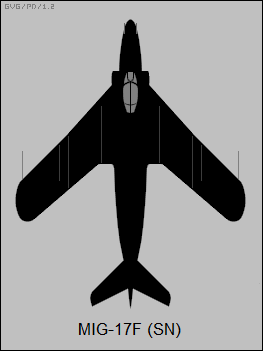 |
izdeliye SN" prototype. Following the encouraging experiments with the SU MiG-15 fitted with pivoting armament, a MiG-17 "Fresco-A" was fitted with a "solid" nose containing three pivoting AM-23 23 millimeter cannon and an engine intake forward of each wingroot. The cannon could pivot up about 27.5 degrees and down about 9.5 degrees. There was one cannon on a pivot on the right side of the nose and two cannon mounted top-bottom on a common pivot on the left side of the nose. The pivoting cannon could be used for both strafing and air combat, under control of a special gunsight
Chinese Production
Shenyang J-5
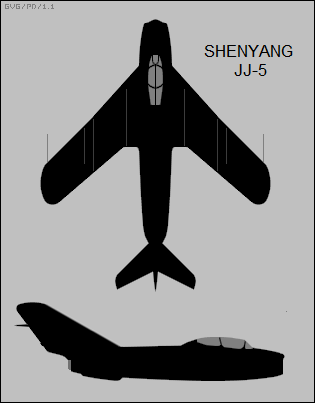 |
Some withdrawn aircraft were converted to remotely controlled targets.
The MiG-17 was license-built in both China and Poland. In the early 1950s, the PLAAF obtained a number of Soviet-built MiG-17 "Fresco-A" day fighters, designated "J-4" or, when passed on to other countries, "F-4". The Chinese obtained plans for the MiG-17F "Fresco-C" day fighter in 1955, along with two completed pattern aircraft, 15 knockdown kits, and parts for ten aircraft. The first Chinese-built MiG-17F, produced by the Shenyang factory, performed its initial flight on 19 July 1956 with test pilot Wu Keming at the controls. The MiG-17F was known as the "J-5" in Chinese service, or "F-5" when it was exported. One was actually trialed as a torpedo bomber, but not surprisingly the concept never made it into formal service.
The Chinese then went on to produce the MiG-17PF interceptor as the "J-5A (F-5A)". Plans were obtained in 1961, but the country was in turmoil in the early 1960s and the first Chinese-built MiG-17PF, produced at the Chengdu factory, didn't fly until 1964, when the type was basically obsolete. It was given the designation of "J-5A (F-5A)". A total of 767 J-5s and J-5As were built to end of production in 1969. Somewhat more practically, the Chinese built a two-seat trainer version of the MiG-17, designated the "JJ-5 (FT-5)". It was something of a hybrid, featuring the cockpit scheme of the MiG-15UTI / JJ-2, the non-afterburning VK-1A engine of the MiG-17 "Fresco-A", and the larger airbrakes of the MiG-17F. It also had a protruding upper intake lip resembling that of the MiG-17PF, but the JJ-5 wasn't fitted with radar. All the nose armament was deleted, with the aircraft carrying a single NR-23 cannon in a belly pack. First flight was in 1968, with the type built at the Chengdu factory.
About 1,061 JJ-5s were built to end of production in 1986, with the type exported to a number of countries. Some sources have referred to it as a "MiG-17UTI", but formally speaking there never was an aircraft with that designation.
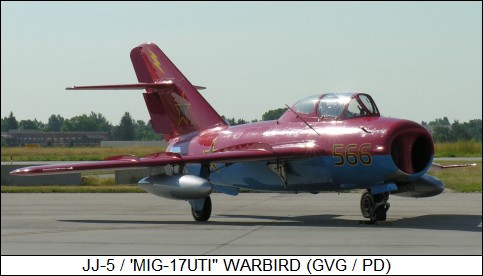 |
Polish Production
"LIM-3 / LIS-3" or "LIM-4 / LIS-4
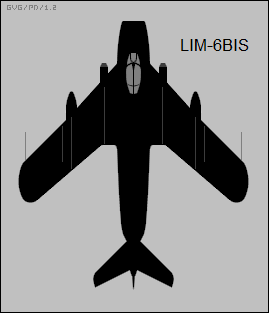 |
The Polish WSK-PZL organization initiated license production of the MiG-17F "Fresco-C" and the VK-1F engine in the mid-1950s, with the first example aircraft rolled out in late November 1956, MiG-15 / LIM-2 production being terminated to make way for the new machine. The MiG-17F fighter, which was built at the Mielec plant, was designated "LIM-5" and the VK-1F engine, which was built at the Rzeszow plant, was designated "LIS-5". Oddly, there doesn't appear to have been any "LIM-3 / LIS-3" or "LIM-4 / LIS-4". The first four aircraft were assembled from Soviet-supplied knockdown kits, with full production following in 1957.
The Mielec plant built a total of 477 LIM-5s. Unlike the LIM-2, which was limited to Polish service, the LIM-5 was exported in some numbers, particularly to East Germany, which obtained at least 120.
Although the Polish Air Force did obtain a dozen MiG-17PF "Fresco-D" interceptors from the USSR in 1955, the service needed more, and so a license was obtained for production of that variant as well. The first "LIM-5P", as it was designated, was rolled out in 1959, and a total of 130 were built in all. They were equivalent to late-production Soviet MiG-17PFs, with the better RP-5 Izumrud-2 radar and other improvements. Some were exported, with 40 sent to East Germany and much smaller batches sent elsewhere.
WSK-PZL built their own dedicated close-support variant of the MiG-17F, the "LIM-5M", which featured large conformal fuel tanks under the wings near the wing roots; twin-wheel main gear with low-pressure tires to handle high loads and permit operation from rough forward airstrips, with the larger gear assemblies accommodated by bulged landing gear doors; and RATO capability to permit takeoffs at high loads, plus a brake parachute to reduce landing roll. It could carry twin rocket pods in addition to its standard MiG-17F built-in cannon armament. Production began in 1960, with about 60 built into 1961.
The LIM-5M wasn't very popular since the tweaks and higher weight degraded handling. There was some consideration given to a "LIM-5RM" tactical reconnaissance variant, but it never got to prototype stage. Work was performed on an improved variant of the LIM-5M, the "LIM-6", featuring a "blown flaps" scheme improve takeoffs and landings, and a number of other tweaks. The LIM-6 turned out to be something of a step backward: the enhancements didn't improve matters all that much and the blown flaps scheme was mechanically unreliable. Although 40 LIM-6 aircraft were built, they were never accepted into service.
After all this screwing around, WSK-PZL essentially backtracked and quit trying to outsmart themselves, giving up on the twin-wheel main gear and the conformal tanks, resulting in a close-support variant designated the "LIM-6bis". It didn't look that much different from a stock LIM-5 except for the fact that it had a fairing in the base of the tailfin for a brake parachute and an extra stores pylon not far from the wing root, like that of the MiG-17AS -- though it had a number of reinforcements and tweaks compared to the LIM-5. The LIM-6bis did have RATO capability, but that feature was rarely used and the fittings were eventually removed from aircraft in service.
The LIM-6bis began production in 1963, with about 70 built into 1964. Surviving LIM-5M and LIM-6 machines were converted to the LIM-6bis standard. A number of reconnaissance machines, known as "LIM-6M", were built, featuring a camera either in the rear fuselage just behind the wing, or in the nose just behind the cannon.
Poles also performed a range of modifications of their MiG-17s, including:
A number of target tug conversions, featuring a wind-driven winch unit in a module on the belly just behind the nose cannon.
"LIM-5R"
reconnaissance fighter, with either a camera in the rear fuselage or in the nose, with about 35 conversions performed from LIM-5
In the early 1970s a number of LIM-5P interceptors were converted to a "LIM-6M" attack configuration. They were fitted with the inboard pylons of the LIM-6bis as well as improved avionics, and their radar was removed, though the antenna fairings remained in place. They were not fitted with brake parachutes.
In the same timeframe, a small batch of LIM-5Ps were converted to a "LIM-6MR" tactical reconnaissance configuration. Their configuration was much like that of the LIM-6M attack conversions, except that they featured a camera fairing in the belly behind the wings.
There was a number of other interesting modifications and special variants:
Another strange armament testbed featured four ARO-57-6 Vikhr (Whirlwind) unguided rocket launchers in the nose. The launchers were mounted internally on a winch-down tray, very much along the lines of the normal cannon armament, and it was difficult to tell the difference between this modification and a stock MiG-17 externally. Each launcher looked like a cannon with a revolver magazine storing six 57 millimeter folding-fin rockets, giving a total warload of 24 rockets. Results of trials are unclear, but in any case the scheme did not proceed to production.
As with the MiG-15, an experiment was conducted with a MiG-17 fitted with an inflight refueling probe. The results were much the same as they had been for the MiG-15: the scheme worked well, but it was not adopted for service.
Following the modification of the MiG-9 to test the guidance system for the KS-1 / AS-1 Kennel antiship missile, discussed earlier, a number of MiG-17s were similarly modified with a radar seeker radome in the nose and a radio control antenna fairing on top of the tailfin. They could actually be carried into the air under the belly of a Tupolev Tu-16 bomber. These machines were redesignated "MiG-17K" or "MiG-17SDK", and they were used both for development and for operational training. There were also a few one-off conversions of MiG-17s to test systems for other long-range missiles.
In the late 1950s, a MiG-17 "Fresco-A" was fitted with wingtip thrusters or "puffers", fed by engine air bleed to provide roll control. This was not intended as an operational fit, being instead a technology demonstrator for future vertical takeoff & landing (VTOL) aircraft. The machine was designated the "MiG-17LL", the "LL" meaning "Letayuschchaya Laboritoriya (Flying Laboratory)", a suffix often assigned to testbeds.
Late in the MiG-17's service life, many were used as target tugs as well as target drones, with the drones serving at least in the 1970s. The target tugs had no special designation, but there were at least two types of drones, designated "MiG-17M" and "MiG-17MM", with different equipment fits. Both featured a noticeable belly tray to store control avionics, as well as a number of other antenna fairings at different locations on the fuselage
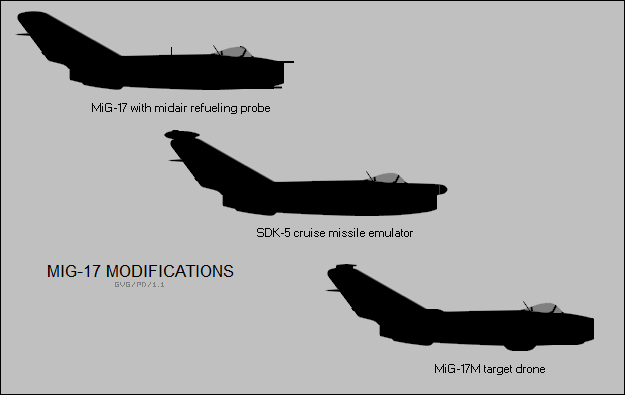 |
MIG-17 IN SERVICE
By the mid-1950s, the MiG-17 and MiG-17F had replaced the MiG-15 in first-line service with the VVS, while the MiG-17P and MiG-17PF had become the standard interceptor of the PVO national air defense organization. At the time, the Americans were very bold in performing reconnaissance intrusions over the USSR, and the Soviets were very keen to take on the intruders.
USSR
Two MiG-17s scored "first blood" on 29 July 1953, when a Boeing RB-50 entered Soviet airspace near Vladivostok; the RB-50 was shot down and the crew all apparently killed -- though there were rumors that some might have survived to go through the interrogation mill, and were then executed. The two pilots of the MiG-17s were decorated for the action. There were occasional encounters between MiG-17s and foreign intruders through much of the rest of the decade. Beginning in 1956, MiG-17 pilots had the frustrating experience of trying to intercept US Lockheed U-2 spyplanes overflying the USSR. A U-2 cruised at such high altitude that a MiG-17 couldn't get close to it.
The VVS Red Five display team upgraded to the MiG-17F in the mid-1950s, though since they flew nine aircraft the "Five" designation wasn't all that appropriate any longer. By 1960, the MiG-17 was in second-line VVS service, with MiG-17AS conversions being used in the attack role, with the type used in declining numbers in the target-tug and drone roles though the 1960s and beyond. Some MiG-17s would remain in service with the DOSAAF organization through the 1980s
Foreign Use.
Like the MiG-15, the MiG-17 was widely exported to Soviet satellites and client states. Red Chinese MiG-17s / J-5s had running battles with a wide range of Taiwanese aircraft from the late 1950s into the early 1960s, with kills and losses for both sides. However, the real combat action for the MiG-17 was in the Middle East and Southeast Asia.
Middle East
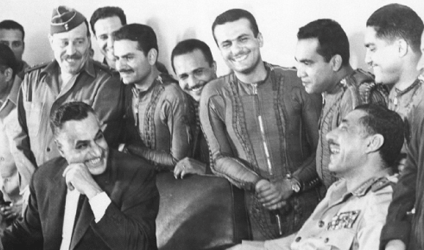 |
| Nasser and Egyptian Pilots in 1965 (Wikipedia ) |
The Egyptians were flying MiG-17Fs during the 1956 Anglo-French-Israeli seizure of the Suez Canal, with the primary adversary of the MiG-17F being Israeli Dassault Mystere IVs. Both sides claimed kills and suffered losses, but though the claims and denials of both sides are impossible to sort out, it seems the Egyptians, with less experienced pilots than the Israelis, took the worst of it even though the MiG-17F and Mystere IV were reasonably comparable. It is known that on 31 October 1956, Israeli Air Force Captain Yakov Nevo and his wingman in Mystere IVAs took on three Egyptian MiG-17Fs, shooting down one of them. It was the first MiG-17 to be shot down.
After the 1956 war, both Egypt and Syria acquired more MiG-17s. Within a few years the two nations began to acquire more advanced Soviet fighters, but the MiG-17 still remained in first-line service, engaging in occasional clashes with Israeli fighters. The MiG-17 was increasingly outclassed by more advanced Israeli fighters and suffered accordingly, though MiG-17s did claim some kills on the Israelis. Egyptian MiG-17s also fought in the "proxy war" between Egypt and Saudi Arabia over Yemen in 1962, focusing on the ground support role but occasionally encountering RAF Hawker Hunters. The MiG-17 played a role in the 1967 Six-Day War, but mostly as a "target", the bulk of them being destroyed in the initial Israeli blitz, and survivors not having much chance of survival when they took to the air. The MiG-17 remained in service with Arab air arms into the 1970s, but it was no longer very combat-effective. The Israelis completely had the measure of the "Fresco", having captured two in 1970 when a pair of Syrian pilots got confused and landed on an Israeli airstrip. Apparently they were deceived into doing so by bogus beacon signals and Arabic-speaking Israeli "ground controllers".
MiG-17s did serve with distinction in the 1973 Yom Kippour or Ramadan War, acting in the ground support role. Syrian aircraft suffered heavily, but the Egyptians had negated Israeli air superiority over the Sinai battleground by setting up a thick umbrella of surface to air missile (SAM) sites that allowed Egyptian strike aircraft to operate with considerable success. Egyptian MiG-17s featured underwing rails for eight unguided rockets and two stores pylons under the forward fuselage for light bombs.
Far east
The zenith of the MiG-17's combat career was Southeast Asia, however. When the US began the air war against North Vietnam in 1964, ramping it up considerably in 1965, the North Vietnamese had an integrated air defense system that they continuously refined and improved. The backbone of the defense system were SA-2 SAMs and a range of anti-aircraft artillery (AAA), ranging from light weapons to heavy guns, directed by a radar network. The network also employed interceptors, with the North Vietnamese heavily relying on the MiG-17 and, later, the MiG-21. As per Soviet doctrine, the fighters were tightly integrated into the air defense network, remaining under very strict ground control. They were not allowed to enter air-defense zones covered by SAM and AAA sites, and were engaged without hesitation if they did. Although the Americans never found North Vietnamese fighters to be as big a threat as SAMs and AAA, at first the US suffered startlingly large losses to all elements of the air defense system. US tactics and procedures were poor, and air combat training had been neglected. In time, matters were improved, and American pilots got "MiG fever", the urge to score air combat kills. However, the Americans never had it easy because the North Vietnamese were learning, too.
A subsonic MiG-17 might not seem like much of a match for a supersonic F-105 or F-4 Phantom, but few aircraft fly at supersonic speeds when they are loaded down with bombs or other external stores, and though American fighters were as a rule much more powerful than the MiG-17, they lacked its agility, the F-105 in particular being regarded as a "lead sled". While the North Vietnamese had the advantage of planning attacks as they pleased, in compensation the American aircraft had the speed to make or break contact at will; any American pilot dumb enough to get suckered into a turning fight with a MiG-17 was likely to learn about the little Red fighter's heavy cannon armament the hard way. Many US pilots regarded the MiG-17 as a much more dangerous foe than the less-maneuverable supersonic MiG-21. The easy way or the hard way, the Americans learned and gradually got the best of toe-to-toe fights, but the North Vietnamese had plenty of tricks up their sleeve. They like "ambush" tactics, loitering at low altitude, hidden against the jungle canopy by their disruptive camouflage colors, and then dashing up into an American strike package, making a single firing pass, and then running away again. Even if the MiGs didn't score a kill, they forced the intruders to dump their bombs, frustrating the air strike. To screen out the MiGs, strike packages were protected by "combat air patrols (CAPs)", including escorting "barrier CAPS (BARCAPs)" and free-ranging "MIGCAPs". Another trick was to fly a natural-metal MiG at low altitude, where it was likely to be "bounced" by American fighters -- which would then be led into a trap in the form or other MiGs, SAM or AAA sites, or both.
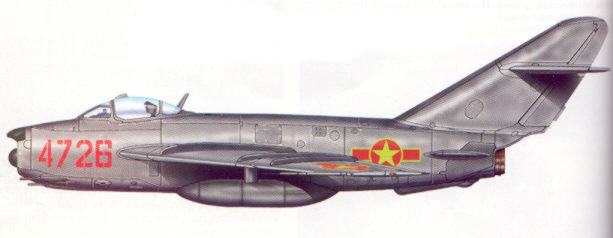 |
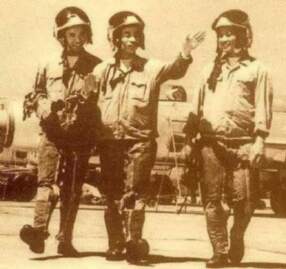 |
| |
|
Early in the war, due to US President Lyndon Johnson's fear of escalating the conflict, North Vietnamese air bases were off-limits for attacks. Of course this was not very sensible, and eventually the air bases were put on the target list. The North Vietnamese had been expecting them to be attacked sooner or later, and came up with an ingenious means of aircraft dispersal, using Mil Mi-6 "Hook" heavy-lift helicopters to simply carry the camouflage-painted aircraft on a sling to a dispersal site in the jungle vegetation. They would be transferred back to an airfield when needed.
In the end, most of the losses inflicted on American aircraft were from SAMs and particularly AAA; the air combat war was always something of a sideshow. Not surprisingly, the number of kills claimed by the two sides differ widely, with American sources insisting the kill ratio was in their favor, and North Vietnamese sources insisting exactly the reverse. Most North Vietnamese pilots were not "hot dogs", being trained Soviet-style to follow orders and display little initiative, but there were a few stars among them. Oddly, the most famous North Vietnamese pilot, Colonel Tomb, exists in a state between fact and legend. No details are known about him, and though he does seem to have been based on one or more MiG pilots, he appears to have either been a propaganda fabrication of the North Vietnamese or an "urban legend" created by American pilots. One of the interesting footnotes of the MiG-17's service in Southeast Asia was the fact that Cambodia operated the type, and when the Cambodians took a more active combat role against the Communists in 1970, some of the MiG-17s operated out of bases in South Vietnam. No doubt some were startled by the sight of MiG fighters sitting alongside Phantoms and other US aircraft.
Africa
Africa was a battleground for the MiG-17, beginning with the Nigerian Civil War in 1969. Various Arab nations passed on MiG-17s and other Soviet to the generally Islamic Nigerian government, which used them against the generally Christian breakaway region of Biafra. The Biafrans didn't have any jet fighters of their own, but they did have some AAA and shot up at least one government MiG-17 so badly that it never flew again.
They also had the support of a Swedish soldier of fortune, Count Carl Gustav von Rosen, who led a small force of Swedish MFI-9B piston light utility aircraft on daring raids against government forces using unguided rocket armament. The MFI-9Bs destroyed at least one MiG-17F on the ground in their attacks, as well as other government aircraft. However, most of the MiG losses were due to accidents, government pilots being usually poorly trained. The government finally crushed the uprising in 1970.
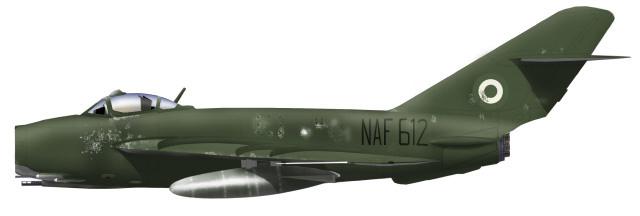 |
| Nigerian MiG 17 Internet |
The MiG-17 was featured in clashes between Ethiopia and the Sudan in the late 1970s, with both sides flying the type and both claiming kills. MiG-17s may have also played a role in revolutions in other African countries. "Frescos" were used as well in the close-support role by the Soviet-backed Afghan government in the war against the Mujahedin insurgents in the 1980s. The regime was not popular and pilots occasionally defected to Pakistan in their aircraft, with at least one MiG-17 joining the exodus.
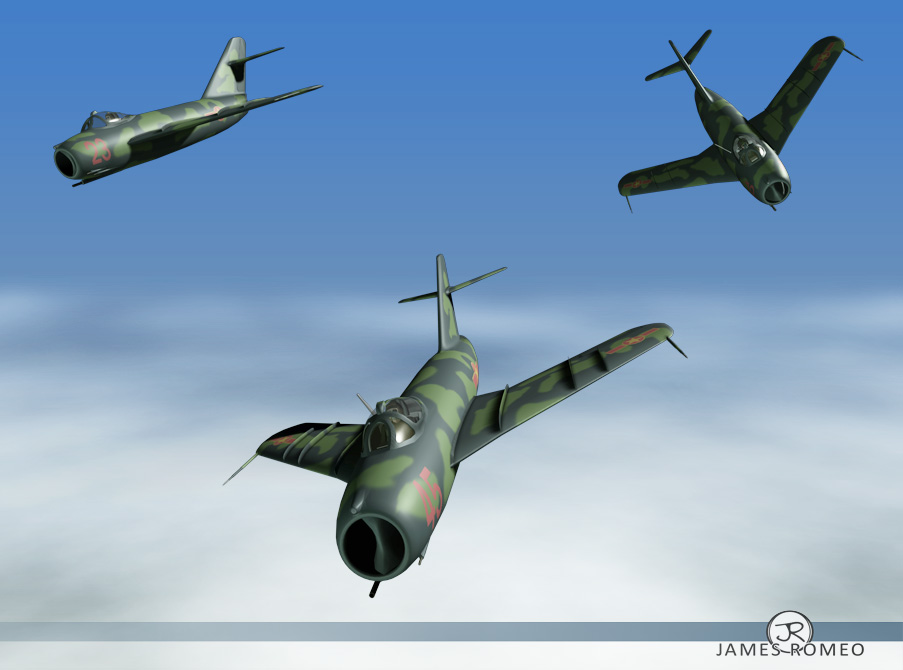 |
| Internet |
Technical data
MIKOYAN MIG-17F
empty weight 3,930 kilograms
MTO weight 6,075 kilograms
Crew 1
wingspan 9.63 meters
wing area 22.6 sq_ meters
length 11.09 meters
height 3.8 meters
Engine
ax speed at altitude 1,145 KPH
service ceiling 16,600 meters
range with tanks 1,470 kilometers
Walk Around 1 2















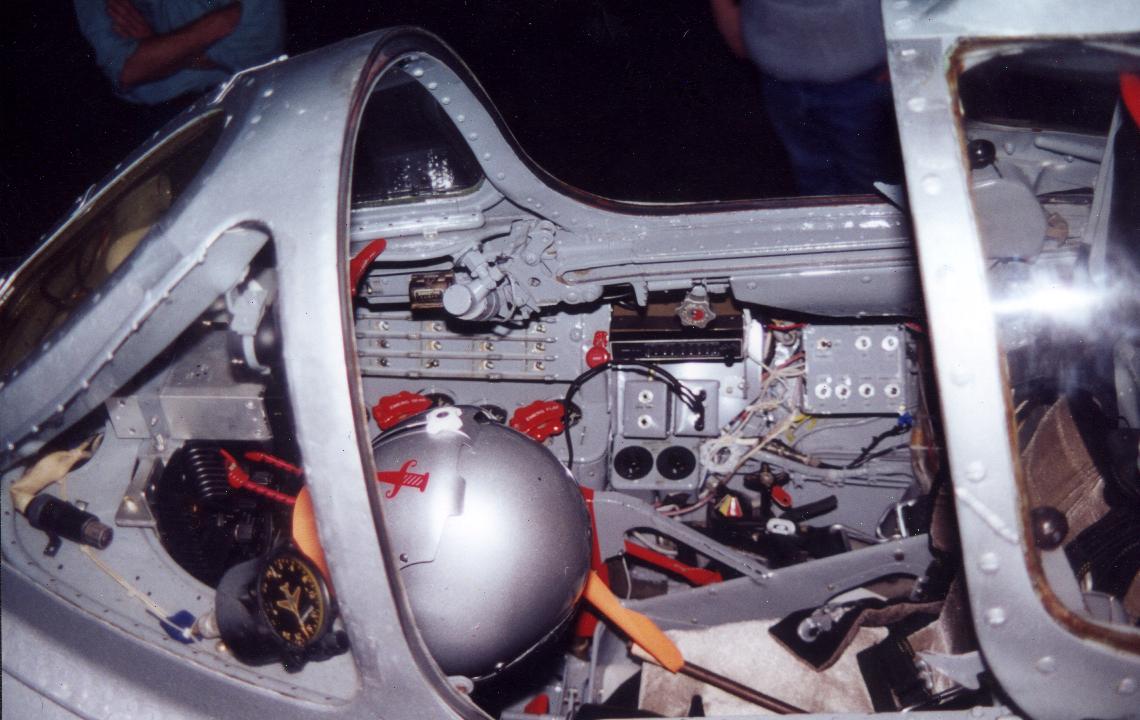



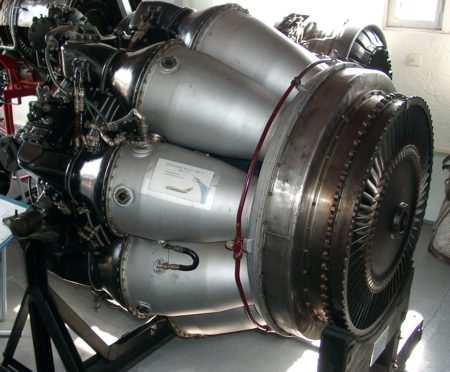
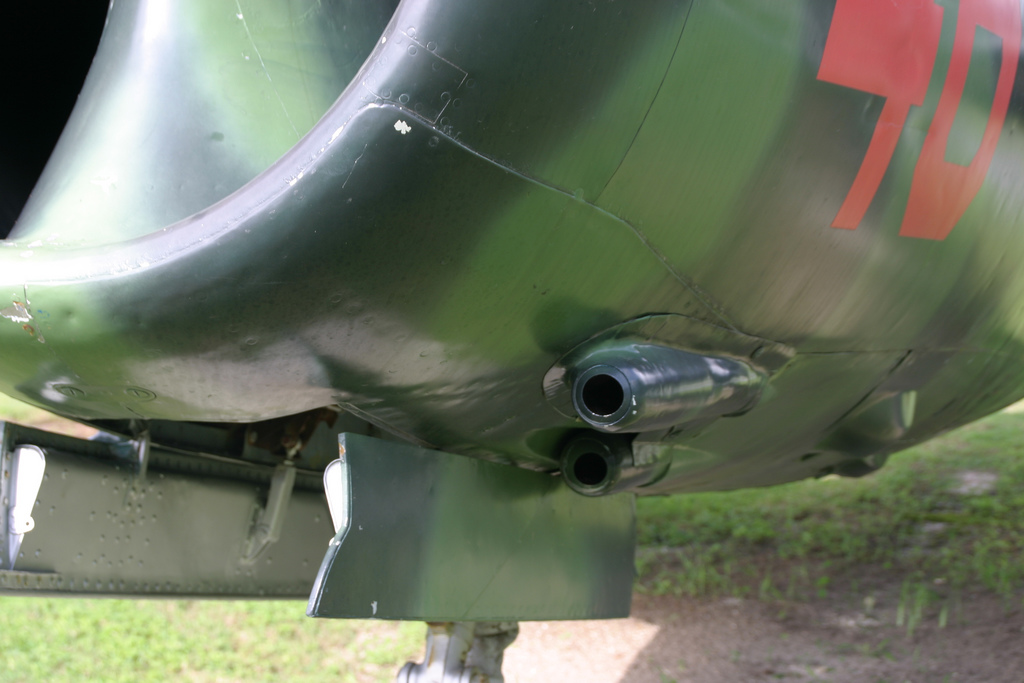
.jpg)













